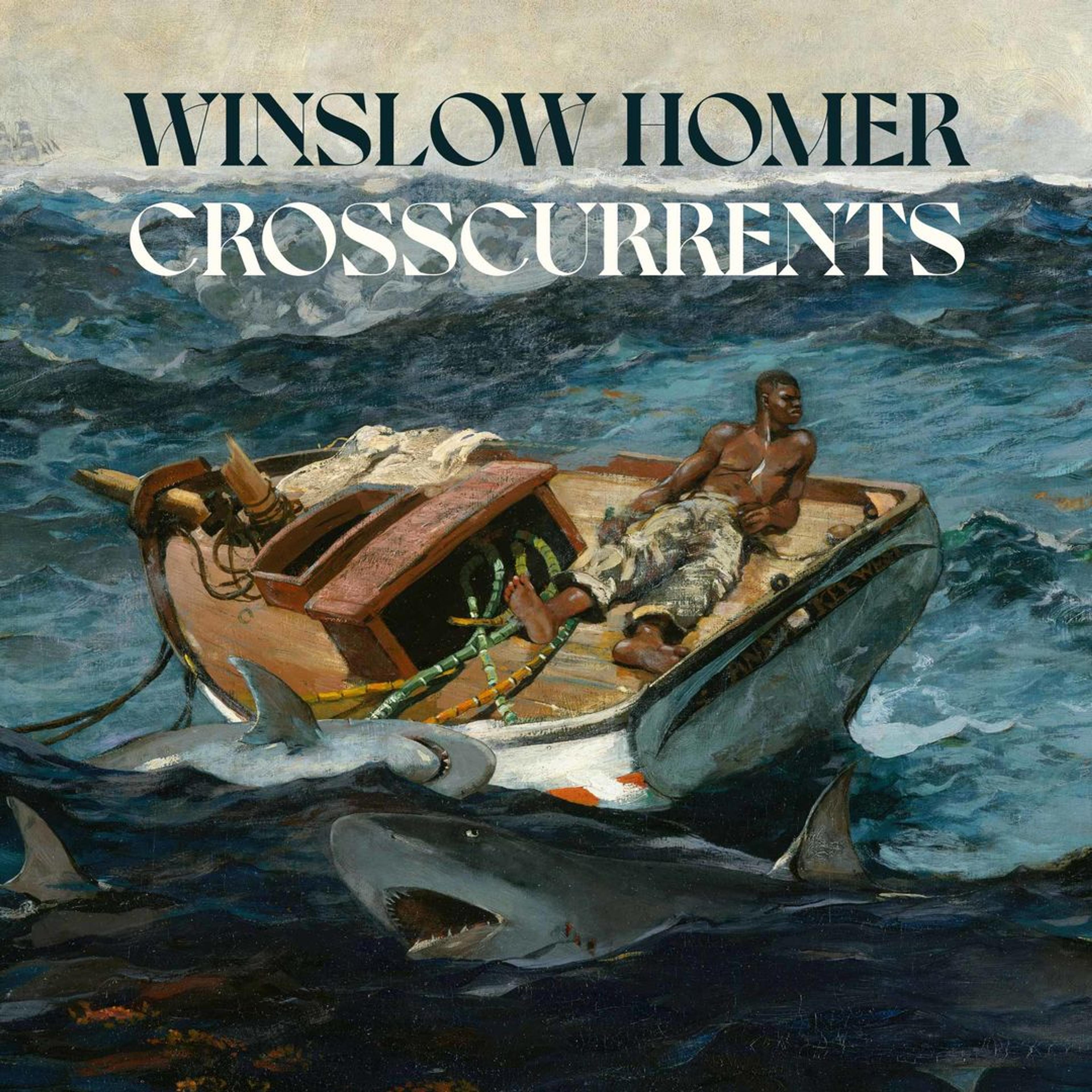Renowned for his powerful paintings of American life and scenery, Winslow Homer (1836–1910) remains a consequential figure whose art continues to appeal to broad audiences. This exhibition reconsiders Homer’s work through the lens of conflict, a theme that crosses his prolific career. A persistent fascination with struggle permeates his art—from emblematic images of the Civil War and Reconstruction that examine the effects of the conflict on the landscape, soldiers, and formerly enslaved people to dramatic scenes of rescue and hunting as well as monumental seascapes and dazzling tropical works painted throughout the Atlantic world. The centerpiece of the exhibition is Homer’s iconic The Gulf Stream, a painting that reveals his lifelong engagement with charged subjects of race, geopolitics, and the environment. Featuring 88 oils and watercolors, Crosscurrents represents the largest critical overview of Homer’s art and life in more than a quarter of a century.
Accompanied by a scholarly publication.
To access the booklet of all in-gallery labels, click here.
The exhibition is made possible by The Peter Jay Sharp Foundation.
Corporate sponsorship is provided by Bank of America.

Additional support is provided by the Barrie A. and Deedee Wigmore Foundation, the Terra Foundation for American Art, White & Case LLP, the Enterprise Holdings Endowment, and Ann M. Spruill and Daniel H. Cantwell.

This exhibition is supported by an indemnity from the Federal Council on the Arts and the Humanities.
It is organized by The Metropolitan Museum of Art and The National Gallery, London.
The catalogue is made possible by the William Cullen Bryant Fellows of The Metropolitan Museum of Art.
Additional support is provided by the Wyeth Foundation for American Art and Elizabeth Marsteller Gordon.
Audio Guide
This audio guide highlights works by the American artist Winslow Homer.

Introduction
Narrator: “These works are real: the artist paints what he has seen and known.” That’s how a critic for the Art Journal of London described Winslow Homer’s paintings in 1867. Indeed, throughout his life, into the early 20th century, Homer did paint what he had seen and known. His realist works capture the nuance and specificity of the many places he’d lived or visited—the rugged shores of Maine, the sunlit beaches of the Caribbean, the dusty fields of rural Virginia.
But Homer’s works are real in another way. Through compelling depictions of his 19th-century world, Homer explores deeper, universal themes that transcend time and place.
Stephanie Herdrich is Associate Curator of American Painting and Sculpture, and Sylvia Yount is the Lawrence A. Fleischman Curator in Charge of the American Wing. Together, they organized this exhibition.
Stephanie Herdrich: Homer is one of the most celebrated American painters of the 19th century, and people are very familiar with his paintings, especially some of his images of modern American life in the late 19th century.
Sylvia Yount: But if you look very deeply, there's also this incipient tension that's there in almost every image. And I think he found early on that he had a real talent for storytelling and for creating tension in his compositions. And for not giving the whole story away.
Stephanie Herdrich: The exhibition looks at the key themes of his art—mortality, humankind’s relationship with nature, contemporary issues of race, conflict—and traces those issues across his career.
Narrator: It’s those themes—and crosscurrents—that we’ll navigate on our tour today as well. Let’s begin.
This audio tour is sponsored by Bloomberg Philanthropies.
- Introduction
- 4362: Prisoners from the Front
- Dressing for the Carnival
- Old Mill (The Morning Bell)
- Eagle Head, Manchester, Massachusetts (High Tide)
- Breezing Up (A Fair Wind)
- 4361: Inside the Bar
- The Life Line
- Lost on the Grand Banks
- A Garden in Nassau
- Sponge Fishermen, Bahamas
- Natural Bridge, Bermuda
- After the Hurricane, Bahamas
- 4382: The Gulf Stream
- Searchlight on Harbor Entrance, Santiago de Cuba
- Early Morning After a Storm at Sea
- Right and Left
- Shooting the Rapids, Saguenay River
- Driftwood
- Woods at Prout's Neck
- A Good Pool, Saguenay River
Playlist
Exhibition Objects
Press the down key to skip to the last item.
Latest reviews
[A] wondrous exhibition…. Takes a fresh look at the themes of struggle and conflict in Homer’s art and simultaneously clarifies his development as a radical painter on the brink of modernism.
Homer may indeed be painting’s Melville… he could cram so much precision and perplexity into a single breath.
It’s a knockout.
Grand yet thematically intent…
Packed with revelations.
Featured Media
Virtual Tour
Join curators Stephanie Herdrich and Sylvia Yount for a virtual tour of Winslow Homer: Crosscurrents, which reconsiders Homer’s work through the lens of conflict, a theme that crosses his prolific career.
Virtual Program
Join scholars and artists for a discussion of Winslow Homer's iconic painting The Gulf Stream and its intersecting themes of race, politics, and environment in the context of the Atlantic world.
